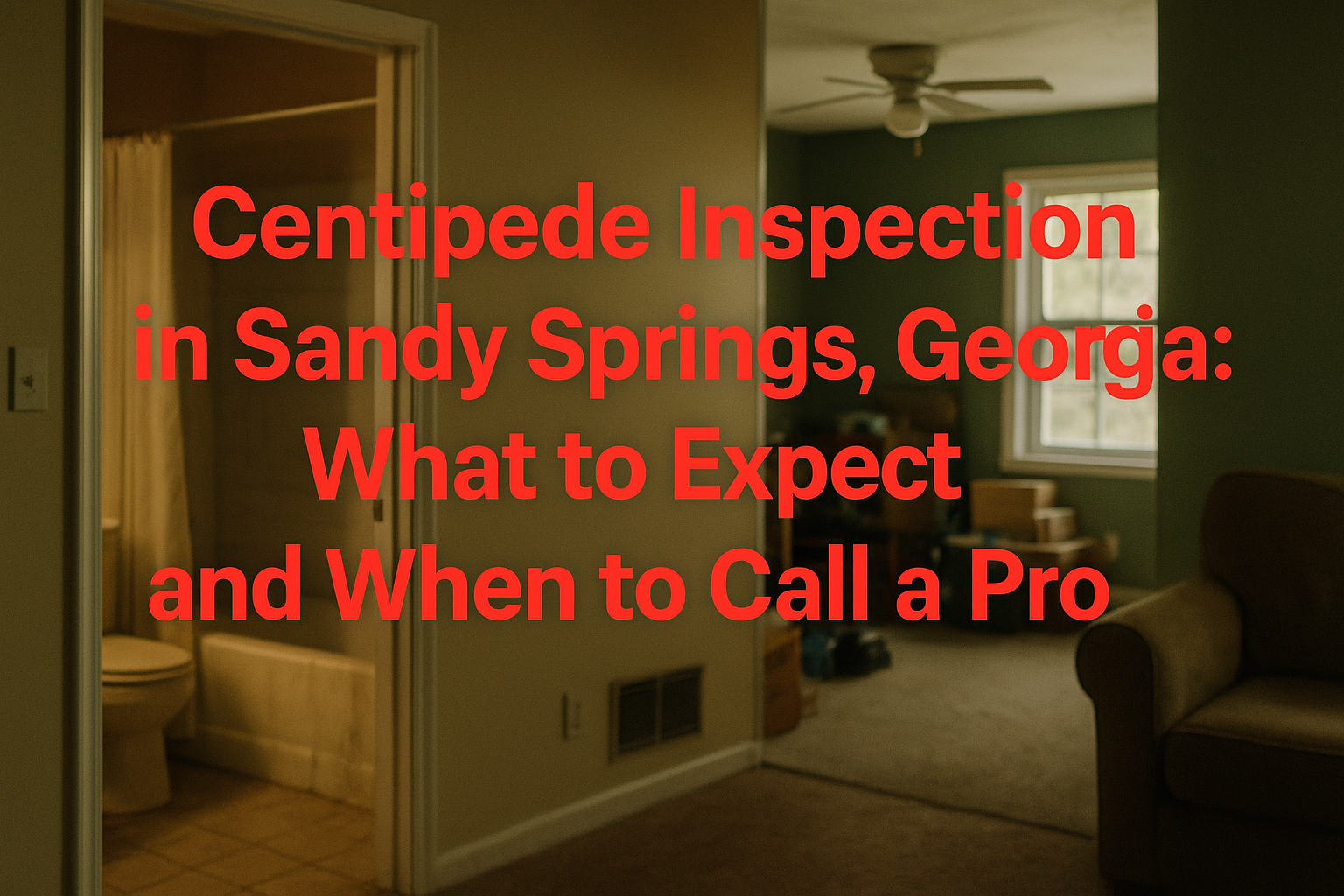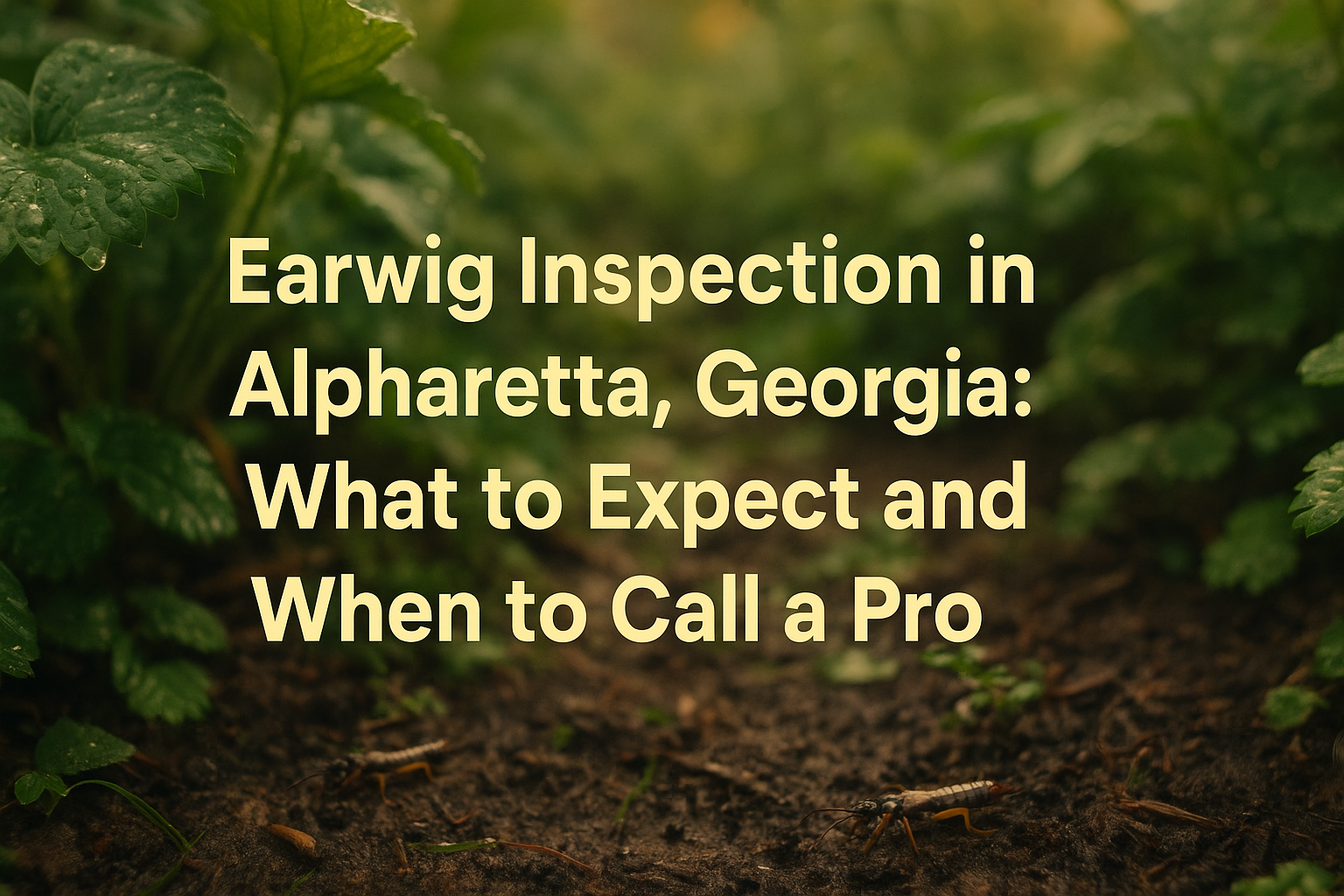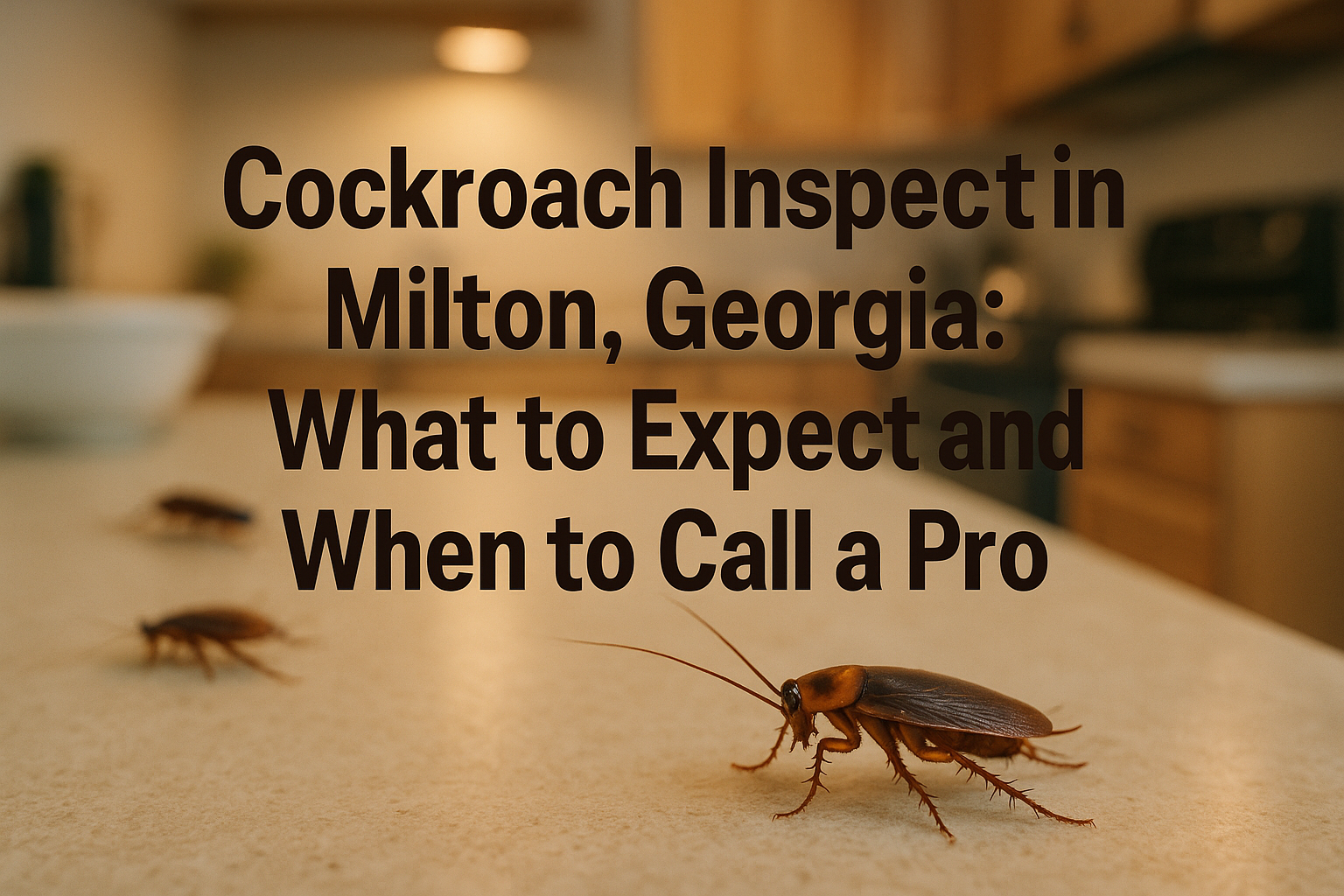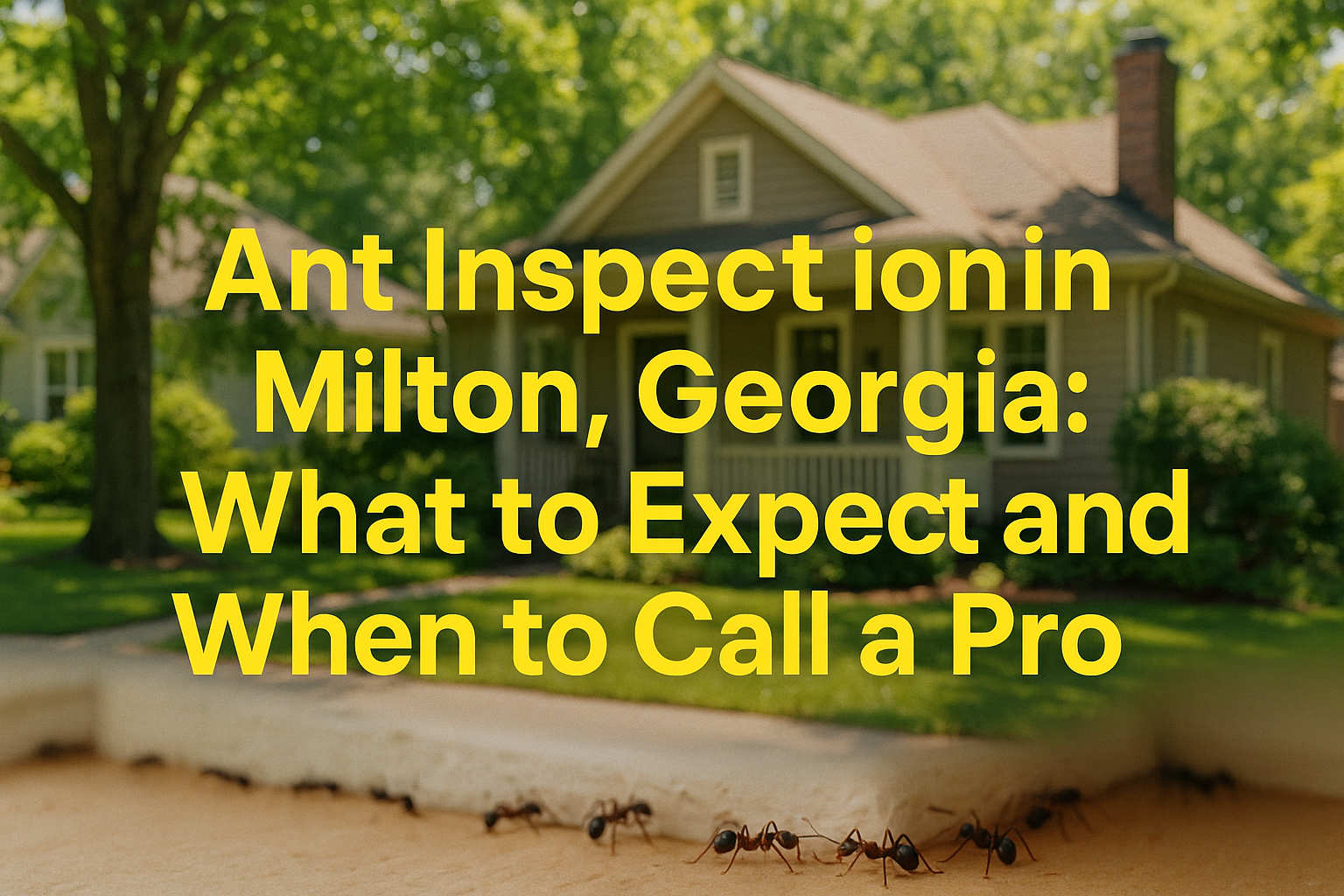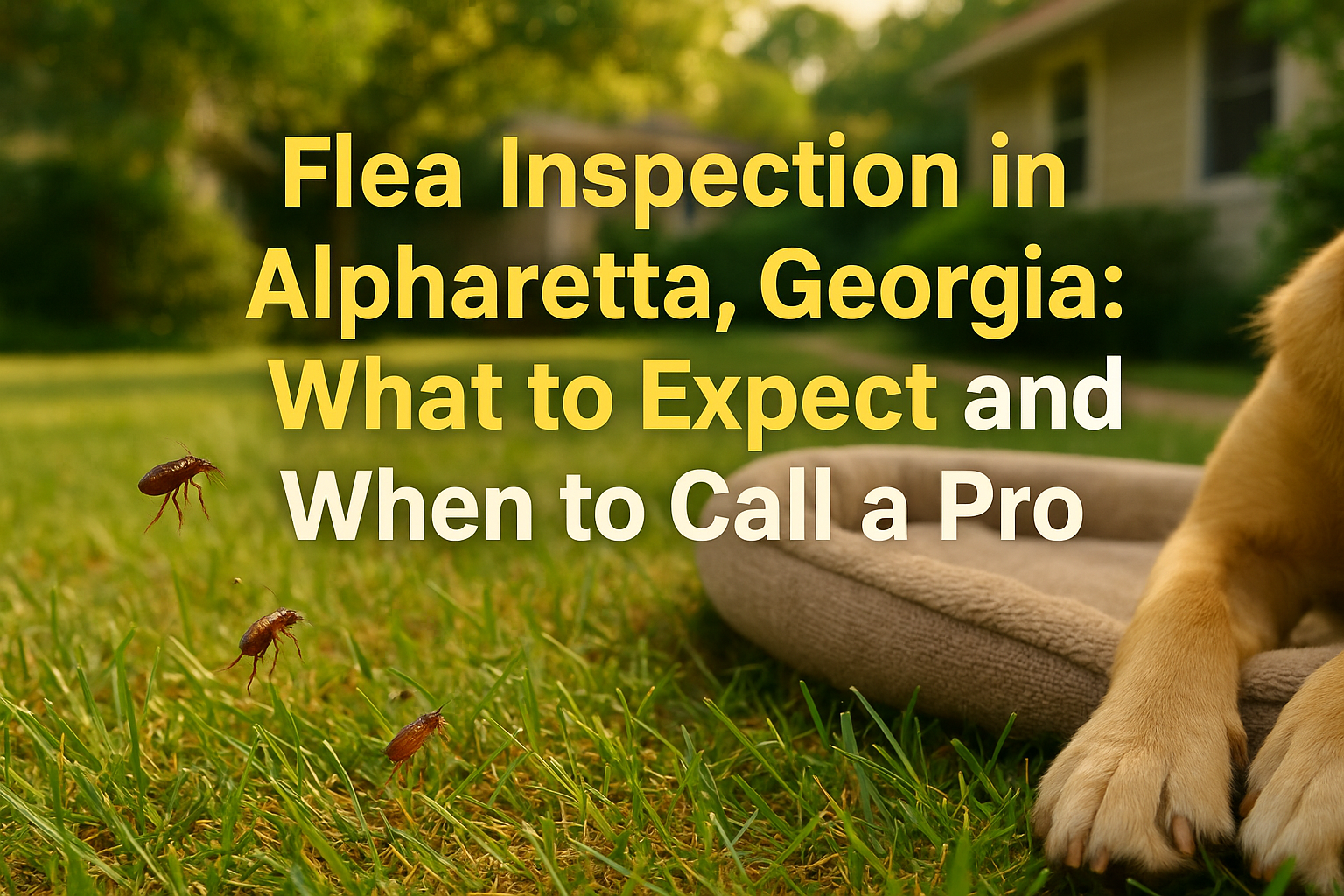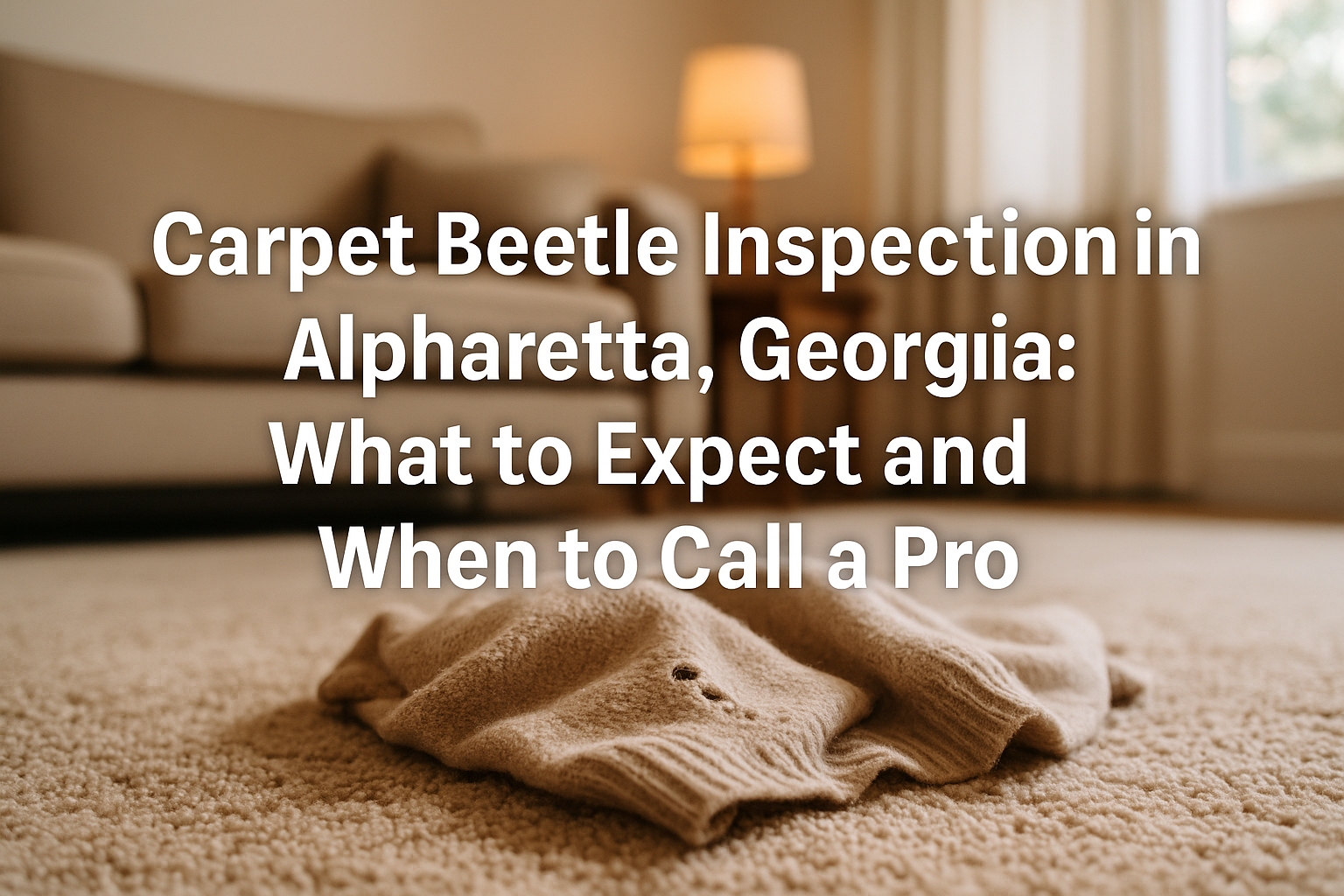Why Centipedes Love Sandy Springs Homes—and Why You Should Care
If you’ve ever had that sudden jolt from spotting a centipede sprinting across your bathroom floor or hiding in your basement, you’re not alone. Here in Sandy Springs, the mix of humid summers, older basements in Riverside, and brand-new builds around Chastain Park makes it basically paradise for these multi-legged invaders. That’s why scheduling a centipede inspection Sandy Springs GA homeowners can rely on is one of the smartest ways to uncover hidden moisture issues and keep pests out. Centipedes aren’t picky—they’ll tuck themselves into any damp corner, crawlspace, or cluttered storage room. And let’s be honest, nobody loves discovering a surprise roommate with that many legs.
What makes things trickier is how easy it is for centipedes to sneak inside. All it takes is a small drafty crack, a basement with a little too much humidity, or a forgotten pile of boxes. Once they’re in, they can multiply before you even know it—turning what seemed like a one-off sighting into a recurring problem.
Letting centipede issues linger can lead to bigger headaches. Not only do they give you the creeps, but a growing centipede population could mean your home has hidden moisture issues or other pest problems. Plus, let’s face it: most of us don’t want to spend our evenings tracking down crawling critters.
Luckily, Sandy Springs has plenty of options to help you take control. The average cost for a professional centipede inspection here runs between $95 and $150, depending on your home’s size and how serious the problem is. Tackling the issue early can save you time and money down the road—and get you back to relaxing at home without that lingering “something just moved” feeling.
In this post, we’ll break down your options for getting rid of centipedes, what you can expect to pay, and the best ways to keep them from coming back. Whether you’re a longtime resident or new to the neighborhood, you’ll get clear tips and no-nonsense advice on how to win the centipede battle—plus, signs it’s time to call in a local pro for a lasting fix. Let’s get started!
What Impacts the Price of a Centipede Inspection in Sandy Springs?
If you’re trying to budget for a centipede inspection Sandy Springs GA homeowners often need, let’s break down what really makes the numbers move up or down. The biggest piece of the puzzle is the size and style of your home. A larger house tucked in the trees of High Point, or a roomy older place near the Chattahoochee, will naturally take more time to check than a tight, newer townhouse close to Perimeter Center. More ground to cover means more nook-and-cranny centipede hideouts to investigate, and that shows up in the cost.
Then there’s the question of how widespread the problem is. Spotting a single centipede in the bathroom is a whole different ballgame than finding evidence in the basement, laundry room, and kids’ bedrooms. If the issue is bigger than you thought, or it means checking behind walls or crawlspaces, the inspection isn’t just about a quick look—it becomes a much more detailed search.
The tools your inspector uses matter, too. Sometimes a thorough job needs more than a flashlight and a keen eye. If your situation calls for moisture meters or even thermal imaging to track little invaders behind walls, that extra tech can bump up the price a notch. Sure, it might mean spending a bit more, but it often uncovers problems you’d miss otherwise—saving you pain and money down the road.
Neighborhood factors and house age also play a role. Living in an older home, or somewhere close to parks and wooded areas, usually means trickier inspections. Dense landscaping or quirky old foundations can hide more centipede-friendly gaps and entry points, so the job takes longer and could involve more thorough treatment recommendations.
On average, most folks can expect to pay somewhere between $95 and $150 for a standard centipede inspection Sandy Springs GA homeowners may need. But when things are urgent, or if your property is large or unusually complicated, the total can sometimes creep up to $175 or a bit more. Whatever you’re dealing with, it’s worth knowing exactly what you’re paying for—and why.
What Impacts the Price of a Centipede Inspection in Sandy Springs?
If you’re trying to budget for a centipede inspection Sandy Springs GA homeowners often schedule, let’s break down what really makes the numbers move up or down. The biggest piece of the puzzle is the size and style of your home. A larger house tucked in the trees of High Point, or a roomy older place near the Chattahoochee, will naturally take more time to check than a tight, newer townhouse close to Perimeter Center. More ground to cover means more nook-and-cranny centipede hideouts to investigate, and that shows up in the cost.
Then there’s the question of how widespread the problem is. Spotting a single centipede in the bathroom is a whole different ballgame than finding evidence in the basement, laundry room, and kids’ bedrooms. If the issue is bigger than you thought, or it means checking behind walls or crawlspaces, the inspection isn’t just about a quick look—it becomes a much more detailed search.
The tools your inspector uses matter, too. Sometimes a thorough job needs more than a flashlight and a keen eye. If your situation calls for moisture meters or even thermal imaging to track little invaders behind walls, that extra tech can bump up the price a notch. Sure, it might mean spending a bit more, but it often uncovers problems you’d miss otherwise—saving you pain and money down the road.
Neighborhood factors and house age also play a role. Living in an older home, or somewhere close to parks and wooded areas, usually means trickier inspections. Dense landscaping or quirky old foundations can hide more centipede-friendly gaps and entry points, so the job takes longer and could involve more thorough treatment recommendations.
On average, most folks can expect to pay somewhere between $95 and $150 for a standard centipede inspection Sandy Springs GA residents rely on. But when things are urgent, or if your property is large or unusually complicated, the total can sometimes creep up to $175 or a bit more. Whatever you’re dealing with, it’s worth knowing exactly what you’re paying for—and why.
Why Centipedes Love Sandy Springs Homes
If you live in Sandy Springs, you already know how our humid summers and leafy neighborhoods set the mood for pests like centipedes. All that moisture and tree cover in spots like North Springs or Windsor Heights gives these crawlies perfect hiding places. Shady yards and thick gardens mean the soil and foundations don’t always dry out, which is like rolling out a welcome mat for centipedes into your basement, crawl space, or even your main living spaces.
Older homes here—especially those charming places with original hardwoods and older windows—might not be as tightly sealed. Cracks, gaps, or outdated vents let moist air and critters sneak right in. Even in newer neighborhoods around Glenridge, you’re not totally in the clear. While these builds tend to have better materials and construction, the landscaping or patio areas can still create damp pockets and entry points for centipedes.
And then there’s location. Houses closer to the Chattahoochee River, or in those spots where the land sits lower, usually have to deal with even more humidity all year round. That extra moisture ramps up the odds you’ll see centipedes making themselves at home.
- Shady, landscaped yards: Trap moisture and give centipedes hiding spots.
- Drainage issues: Persistent dampness in basements and crawl spaces draw them in.
- Older construction: Cracks, gaps, and poor sealing make it easier for pests to squeeze inside.
- Newer construction: Still at risk if landscaping traps moisture near the house.
- Close to water sources: Higher humidity overall gives centipedes a year-round advantage.
This local mix of weather, yard features, and building style not only determines how likely you are to spot centipedes—it also shapes what’s involved in a thorough inspection. Sometimes, the more moisture and entry points around, the more time and expertise it takes to track down where these fast movers are sneaking inside (and that can affect the price of professional treatments, too). Understanding these neighborhood quirks is how we get the job done right in Sandy Springs.
Proven Strategies to Cut Down on Centipedes and Inspection Bills
If you’ve ever spotted a centipede darting across your bathroom or basement, you know just how unwelcome these critters can be. The good news? You can take charge with a few smart moves around your property, making your home less attractive to centipedes and saving money by minimizing the need for repeated pest inspections.
- Keep things dry. Centipedes love damp spaces. Run dehumidifiers in basements, crawl spaces, and even closets—wherever moisture lingers. If you notice any leaky pipes, sweaty plumbing, or musty smells, get those fixed without delay.
- Declutter, inside and out. Piles of clothes, cardboard boxes, leaf heaps, or garden trash right up against the foundation? That’s an open invite for centipedes. Tidy up storage spaces and keep the exterior clear of organic debris nearest your walls.
- Seal off their favorite entry points. Those thin gaps around doors, windows, vents, or spots where utility lines come into your house—seal them with caulk, weatherstripping, or foam. Older houses need extra attention, especially if you notice drafty areas or daylight peeking through cracks.
- Stay on top of seldom-used spaces. Every month or two, check on basements, storage rooms, boiler areas, and crawl spaces. Catching issues early (moisture, bugs, unexplained debris) keeps repairs—and surprises—less costly down the line.
- Book regular inspections at the right time. Depending on your home and neighborhood, an annual inspection might do the trick, but some situations call for one every six months—especially if you’re near woods or water. Opt for inspections during wetter seasons or peak bug activity periods. A pro will catch what you might miss, saving you from headaches later.
Small prevention steps now can keep both centipede invasions and inspection costs from spiraling. Next, we’ve laid out a quick visual checklist and highlighted the best windows for scheduling proactive pest checks, so you know exactly when and how to take action.
When Should You Schedule a Centipede Inspection in Sandy Springs?
If you’ve ever run into a creepy centipede sprinting across your floor, you know timing is everything. In Sandy Springs, the action ramps up most in spring and fall. That’s when the combination of warmer weather, heavier rain, and even regular yardwork send centipedes—and moisture—straight toward cozy indoor spaces. Homes with lush lawns and older basements see more activity than most, so if that sounds like your place, it’s smart to stay a step ahead.
Local pest experts actually see their calendars fill up from March through June and again from September through November. Waiting too long during these busy times can mean delays, higher costs, or missing those early warning signs. Booking your centipede inspection Sandy Springs GA residents trust before peak season lets you lock in an appointment at a fair price—and keeps your home comfortable and pest-free.
- Spring & Fall: Centipede infestations spike as moisture levels climb, landscaping routines pick up, and pests search for new spots to shelter.
- Summer: Ideal for quick checks if you’re seeing sudden activity. Heat and rain can push pests inside overnight.
- Winter: Lowest risk season. Unless you’ve had chronic issues, you could save some money and skip inspections until spring rolls around again.
Catching centipedes early means smaller problems, fewer treatments, and way less hassle. Inspect before they get comfortable, and you’ll spend the rest of the year not worrying about them (or the unexpected invoice that comes with a big infestation). Remember, a local pro’s calendar fills fast right when you need it most—so a little planning goes a long way.
Check out the graphic above for a simple guide to Sandy Springs’ centipede seasons, and consider getting on a regular inspection schedule to stay ahead of the curve.
Get a Free Centipede Inspection from Local Experts
If you’re spotting the occasional centipede in your Sandy Springs home, you’re probably wondering if it’s time to call in a pro—or if you can handle things on your own. Here’s the good news: you don’t have to guess. At Anthem Pest Control, we make it simple to know for sure, with no pressure and no surprises.
Our team offers completely free, no-obligation property inspections just for Sandy Springs homeowners. We show up on time, give your place a thorough once-over, and explain exactly what we find. If centipedes—or any other pests—are creeping around, you’ll know about it before they turn into a bigger issue.
- Custom plans: No cookie-cutter solutions here—we build pest control around your specific situation and space.
- Modern technology: We use the latest pest management tools for safe, powerful, and lasting results.
- Industry-leading guarantees: We stand behind our service. If centipedes come back, so do we—at no extra cost.
Your peace of mind starts with a simple step. Call us today at 877-3718-5196 or visit our page about pest problems we solve to schedule your completely free inspection. No strings attached, just honest advice and options from local experts you can trust. Let’s help you get back to a safe, centipede-free home—starting now.
Centipede Inspections: Your Top Questions Answered
- Noticing centipedes indoors a little too often? If you’ve started seeing these fast movers inside, especially in basements or bathrooms, or if you’re battling moisture, it might be time to call in the pros. DIY traps and sprays only go so far—if they’re not working, a professional inspection is the next step.
- Where do centipedes love to hide in Sandy Springs homes? Anywhere that’s damp, dark, and a little forgotten. Think wet basements, cluttered storage rooms, crawl spaces, and bathrooms—especially in those older, charming neighborhoods we have around here.
- Are centipede bites in Georgia dangerous? For most folks, a bite is about as bad as a bee sting—annoying, but not a huge deal. If you’re sensitive to insects, just be cautious and give us a call if you’re worried.
- What’s it cost to get a centipede inspection in Sandy Springs? You’re usually looking at somewhere between $95 and $150, depending on how big your place is and how many creepy-crawlies you’ve got.
- Does Anthem Pest Control stand behind their centipede work? Absolutely! We always offer follow-up visits and a satisfaction guarantee. If centipedes or other pests come back, so do we until things are right.
- How often should you schedule a centipede check? Once a year keeps things under control for most homes, but if you’re in a damp area or have had problems before, you might want to book us a little more often.
- Can you keep centipedes away without calling a pro? Cutting down moisture, sealing up those little cracks, and keeping storage areas tidy can definitely help—just keep in mind that bigger infestations usually need a professional touch.
- Do centipede inspections cover other pests? They sure can! Anthem Pest Control offers bundled inspections that also cover spiders, roaches, and other common household pests you might find hanging out with centipedes.
Have more questions? Our team at Anthem Pest Control is happy to chat and help you feel good about protecting your Sandy Springs home from centipedes—and anything else that’s bugging you!

